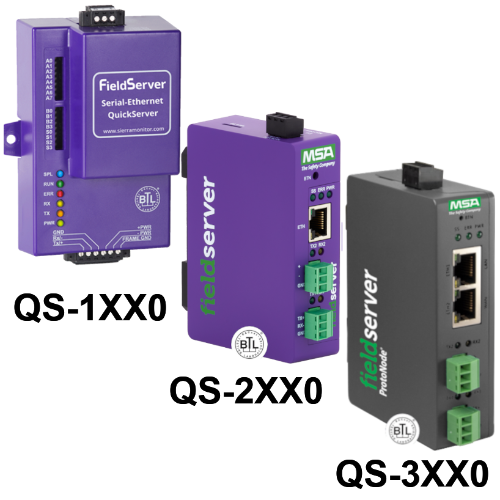Streaming Architecture for Control Networks (sACN)
What is Architecture Control Network (ACN)?
Architecture for Control Networks (ACN) is a suite of network protocols for control of entertainment technology equipment, particularly as used in live performance or large-scale installations. For example, lighting, audio or special effects equipment. ACN is maintained by Entertainment Services and Technology Association and its first official release was ANSI Standard E1.17-2006 - Entertainment Technology - Architecture for Control Networks. The standard was subsequently revised and released as ANSI E1.17-2010.
ACN was initially designed to be layered on top of UDP/IP and therefore will run over most IP transports including standard, inexpensive Ethernet and 802.11 (Wi-Fi) networks.
(Ref: https://en.wikipedia.org/wiki/Architecture_for_Control_Networks)
sACN?
Streaming ACN (sACN) is a standard protocol developed by ESTA to efficiently transport DMX universes over the network.
sACN is a popular protocol to control a large number of RGB LEDs. You can find very affordable LED controllers taking sACN input like the Advatek PixLite 16 and the very professional Enttec Pixelator
sACN or Streaming-ACN is the colloquial name for the ANSI E1.31-2016 standard. This is primarily designed to move zero start code DMX data over a network in a way that is compatible with the full ACN standard (ANSI E1.17-2010)
ANSI E1.31 - 2016, Entertainment Technology - Lightweight streaming protocol for transport of DMX512 using ACN, is a revision of the 2009 standard. It describes a mechanism to transfer DMX512-A packets over a TCP/IP network using a subset of the ACN protocol suite. It covers data format, data protocol, data addressing, and network management It also outlines a synchronization method to help ensure that multiple sinks can process this data concurrently when supervised by the same controller. This revision includes DMX512 universe synchronization.
Overview and Architecture
This standard can be used to transfer DMX512-A [DMX] packets of all START Codes via an ANSI E1.17 [ACN] supported network. It also defines a method by which this [DMX] data may be synchronized across multiple receivers. A simple packet wrapper approach is used whereby the data is encapsulated in a wrapper following the ACN packet structure. The ACN standard wrapper is carried in UDP [UDP] packets when used on TCP/IP networks. In the future, this use of the ACN wrapper and packet structure will also allow E1.31 to be carried over other networks supported by ACN.
The wrapper is structured such that it is both compatible and meaningful to the ANSI E1.17 [ACN] standard. Readers are referred to the ANSI E1.17 [ACN] standard, particularly the "ACN Architecture" and "Device Management Protocol" documents for more information. The "Root Layer Protocol" used in this standard is described in the "ACN Architecture" document.
This standard uses multicast addressing to provide a mechanism to partition traffic for distinct universes It is comparable to ArtNET in many aspects. One nice thing is the multicast option allowing very easy configuration.
.pdf%20-%20Adobe%20Acrobat%20Reader%20DC%20(32-bit)_24-14-26-18.png)
Appropriate Use of This Standard
This standard uses a non-reliable IP transport mechanism to stream packets of data from multiple sources to multiple receivers over the ACN network. There is no acknowledgement and therefore no assurance that all packets have been received.
Classes of Data Appropriate for Transmission
This standard, E1.31, is intended to define a method to carry DMX512-A [DMX] style data and metadata over IP Networks, including Ethernet IP Networks. It is designed to carry repetitive control data from one or more sources to one or more receivers. This protocol is intended to be used to control dimmers, other lighting devices, and related non-hazardous effects equipment.
Protocol Packet Structure Summary
E1.31 is a protocol that lives within the suite of protocols defined by the ANSI E1.17 [ACN]
standard. The ACN standard provides a method for layering protocols and for using a simple
repeating message structure throughout. The lowest layer ACN protocol is called the Root
Layer Protocol (RLP), which wraps E1.31 as well as other protocols such as Session Data
Transport (SDT). It is not necessary to implement or understand these other protocols to use
E1.31 to send DMX512-A [DMX] data over CAN.
The repeating message structure is called the Protocol Data Unit (PDU) format.
References
- Image Credit: Wikipedia, https://webstore.ansi.org/standards/esta/ansie1312016
- https://tsp.esta.org/tsp/documents/docs/E1-31-2016.pdf
- https://artisticlicenceintegration.com/technology-brief/technology-resource/sacnand- art-net/
- https://www.lightjams.com/sacn.html#sACNControllers
- https://www.lightjams.com/sacn.html
Integration Solutions
Chipkin has integration solutions for almost every situation. We specialize in network protocol communications and have over 20+ years of experience. Click for more information:



